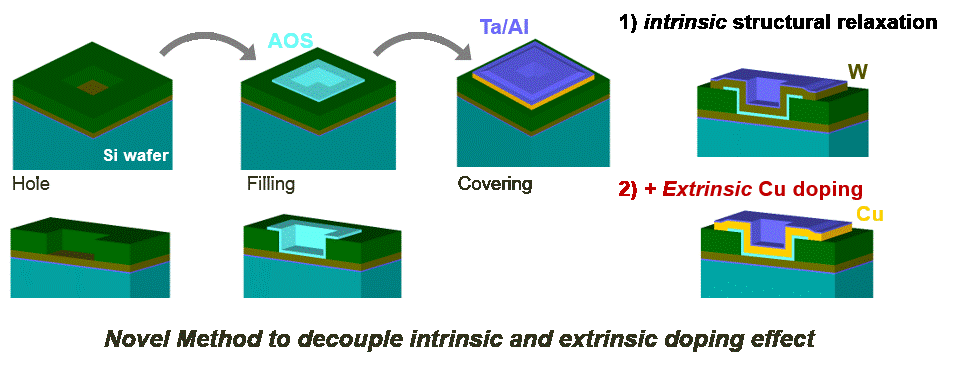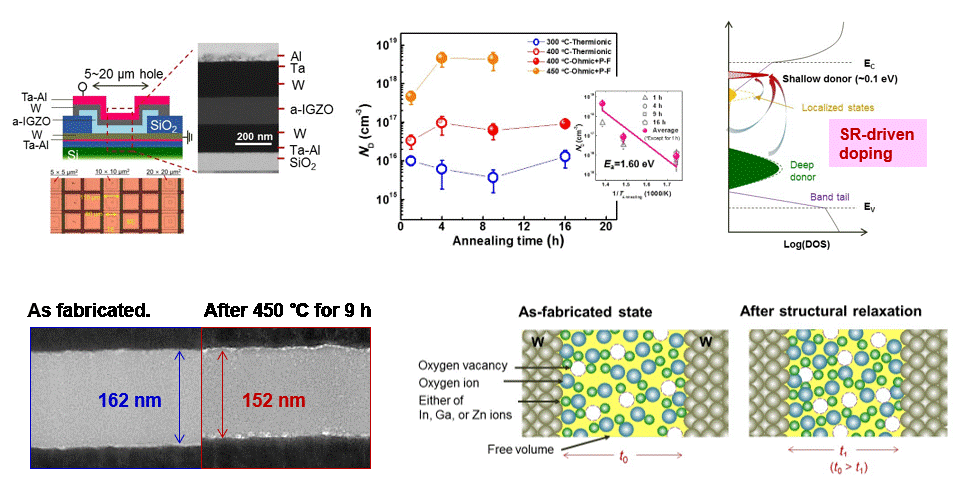Amorphous oxide semiconductors (AOSs) have been considered as one of the most promising materials for implementation of next-generation electronic devices that are flexible, transparent, and large-area applicable due to their novel properties. AOSs have long-range film uniformity induced by long-range structural disorder and show excellent electron mobility comparable to the corresponding crystalline oxide semiconductors. However, the use of AOSs in electronic devices has been hindered by the lack of controllability of electrical properties as well as stability, which is induced by various electronic states of dopant in subgap region. Although electron mobility is relatively insensitive to structural disorder, electronic states of both intrinsic and extrinsic dopants are affected by the local atomic structure. As a result, dopants form various electronic states and irregular doping efficiency is observed. Moreover, degree of structural disorder tends to decrease because amorphous structure is thermodynamically metastable, which is referred as structural relaxation (SR). Thus, doping efficiency of dopants as well as distribution of subgap states could change by thermal stress. Therefore, understanding the continuous change of doping efficiency of intrinsic and extrinsic dopants driven by thermal stress is necessary for controlling the electrical properties and improving the stability of AOSs.
The objective of our team is to unravel the intrinsic and extrinsic doping mechanisms in AOSs with respect to thermal history and to provide guidelines for not only delicate control of electrical properties, but also creation of new functionality in AOSs.

Before investigating thermally driven doping mechanisms in AOSs, it is necessary to regulate the additional reactions in AOSs such as redox reactions. In this study, novel metal/AOSs/metal structured devices are designed to prevent unwanted reactions of AOSs with the ambient. Based on the devices, changes in electrical properties of AOSs induced by intrinsic atomic rearrangement as well as extrinsic dopant migration were investigated.
